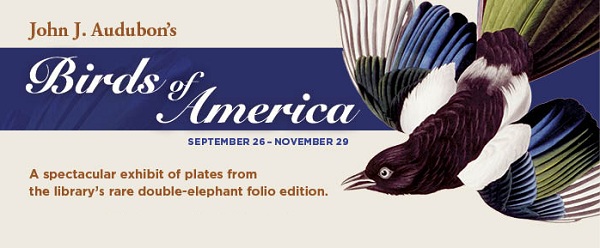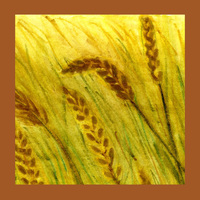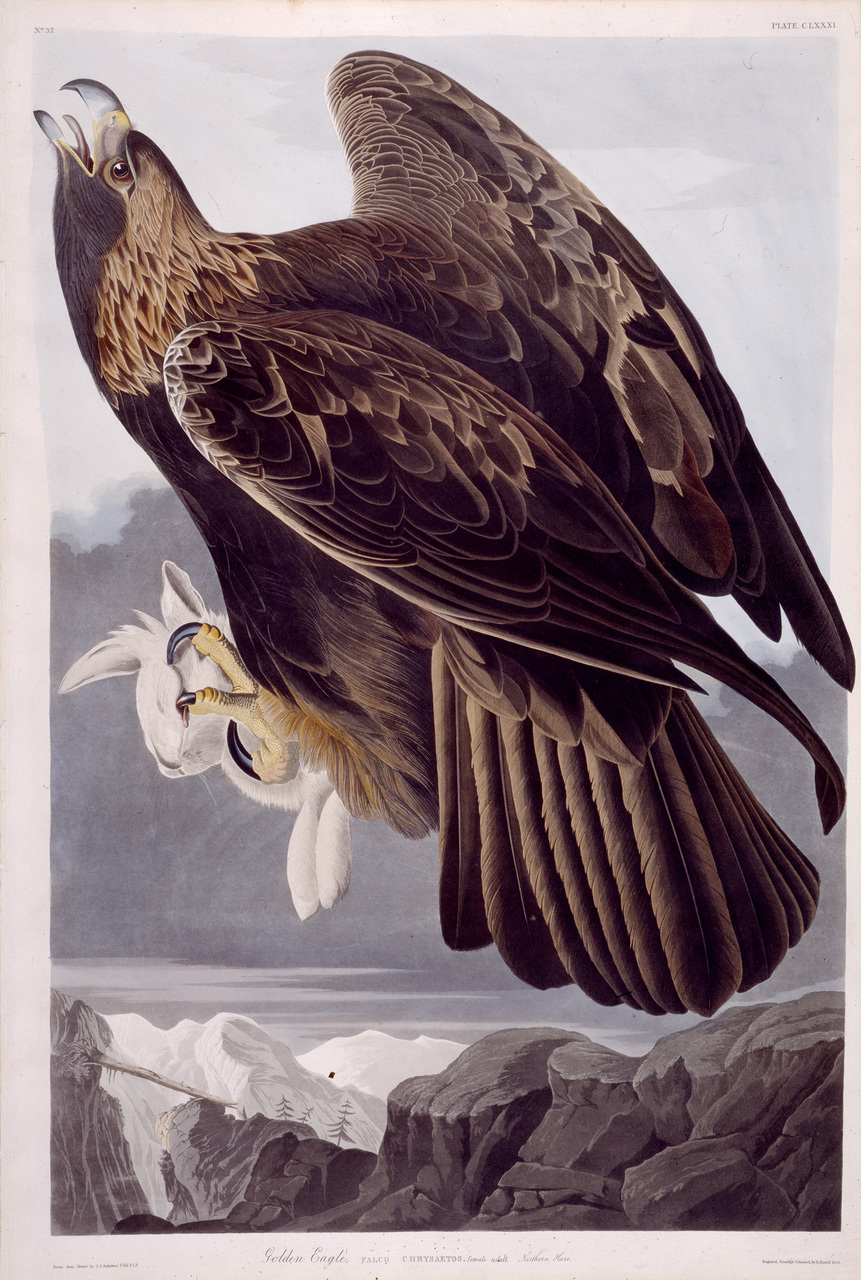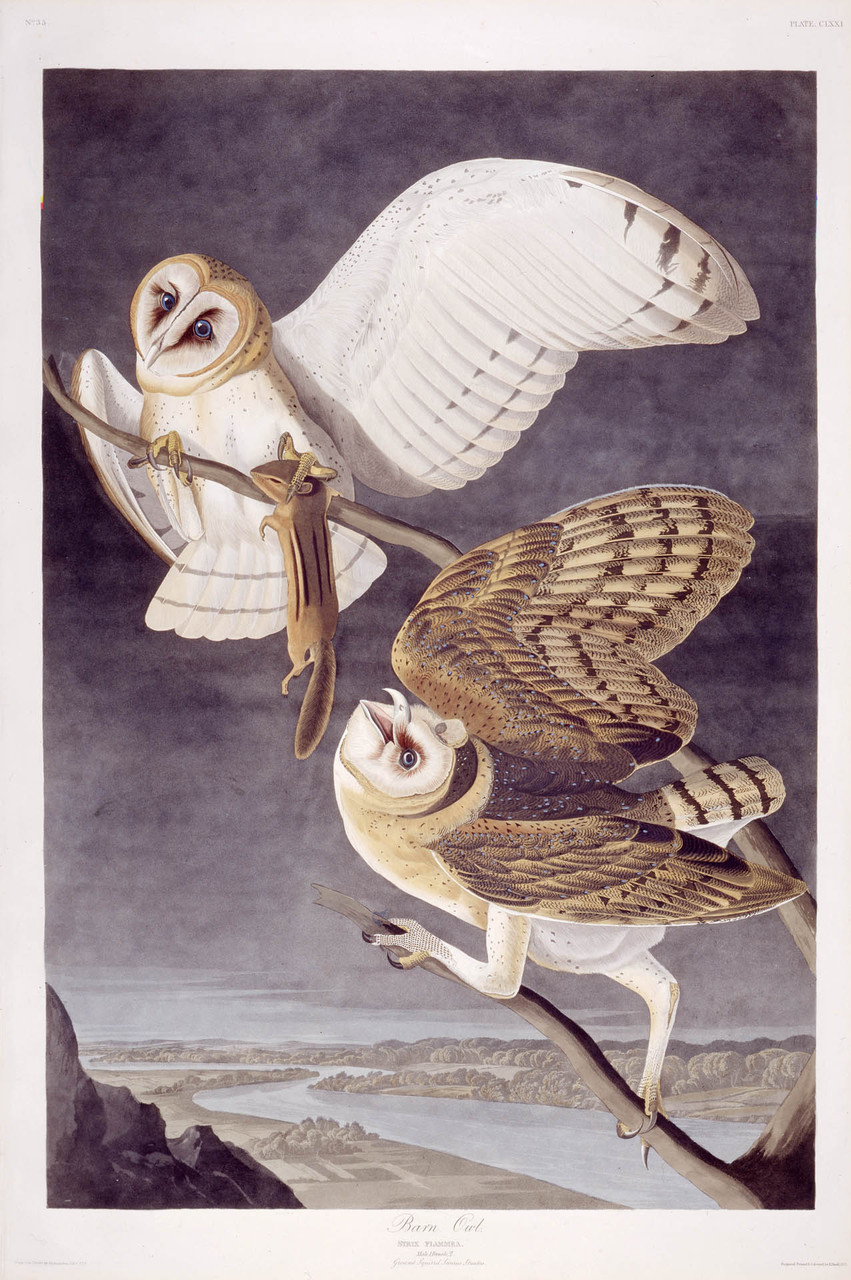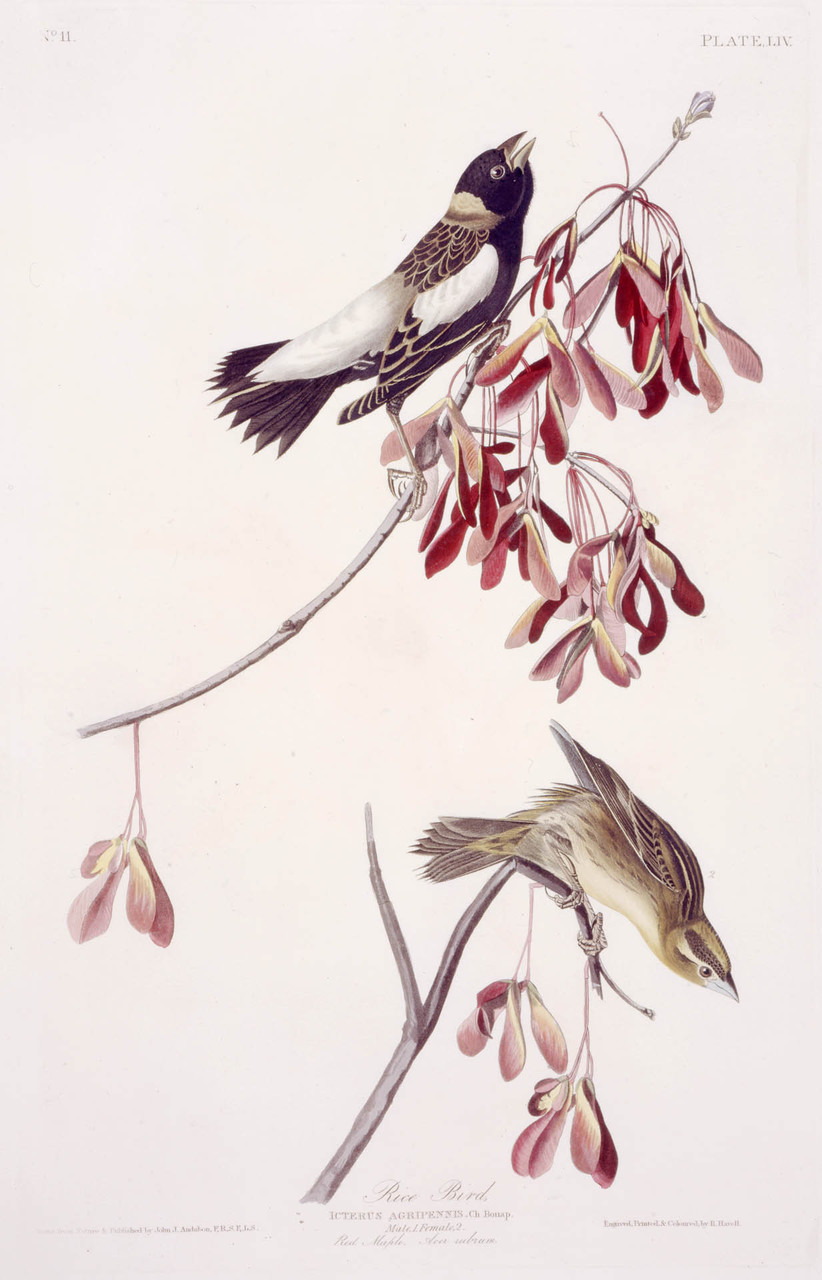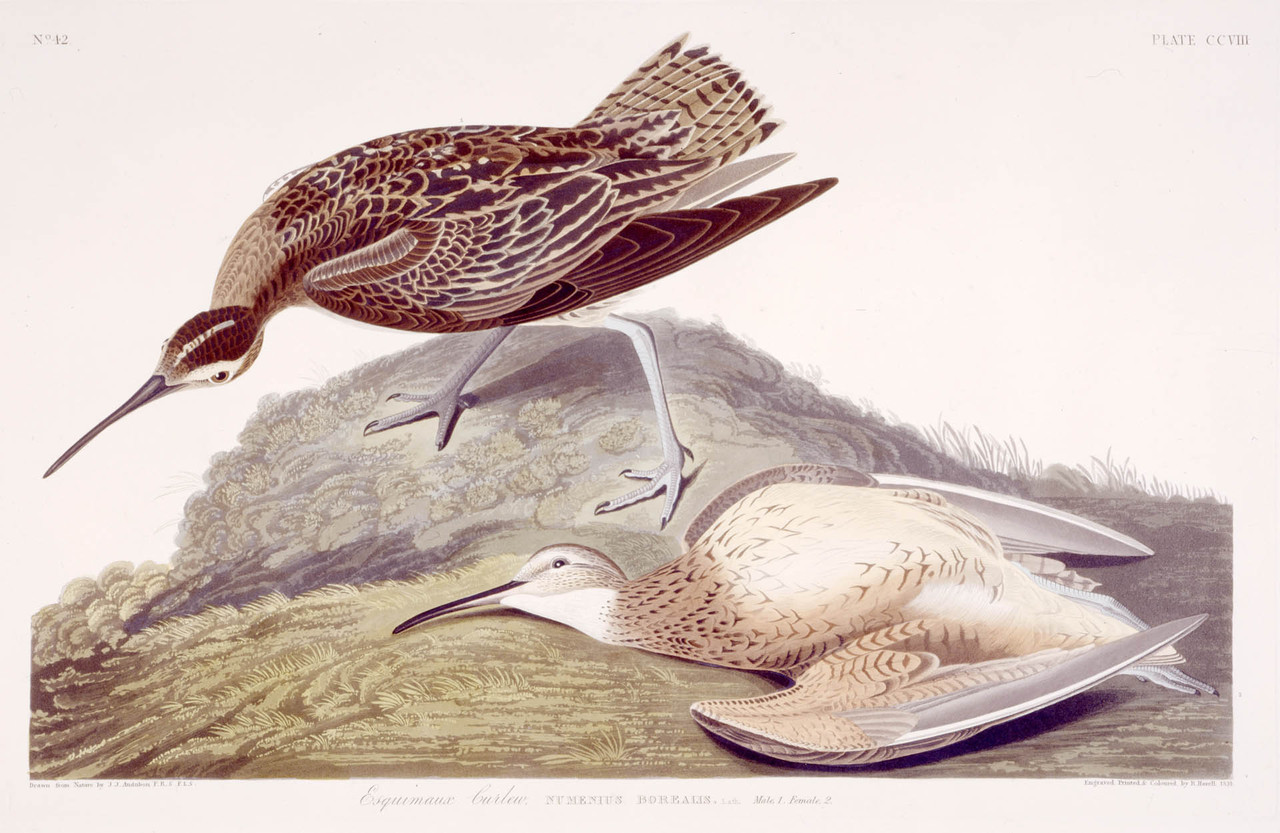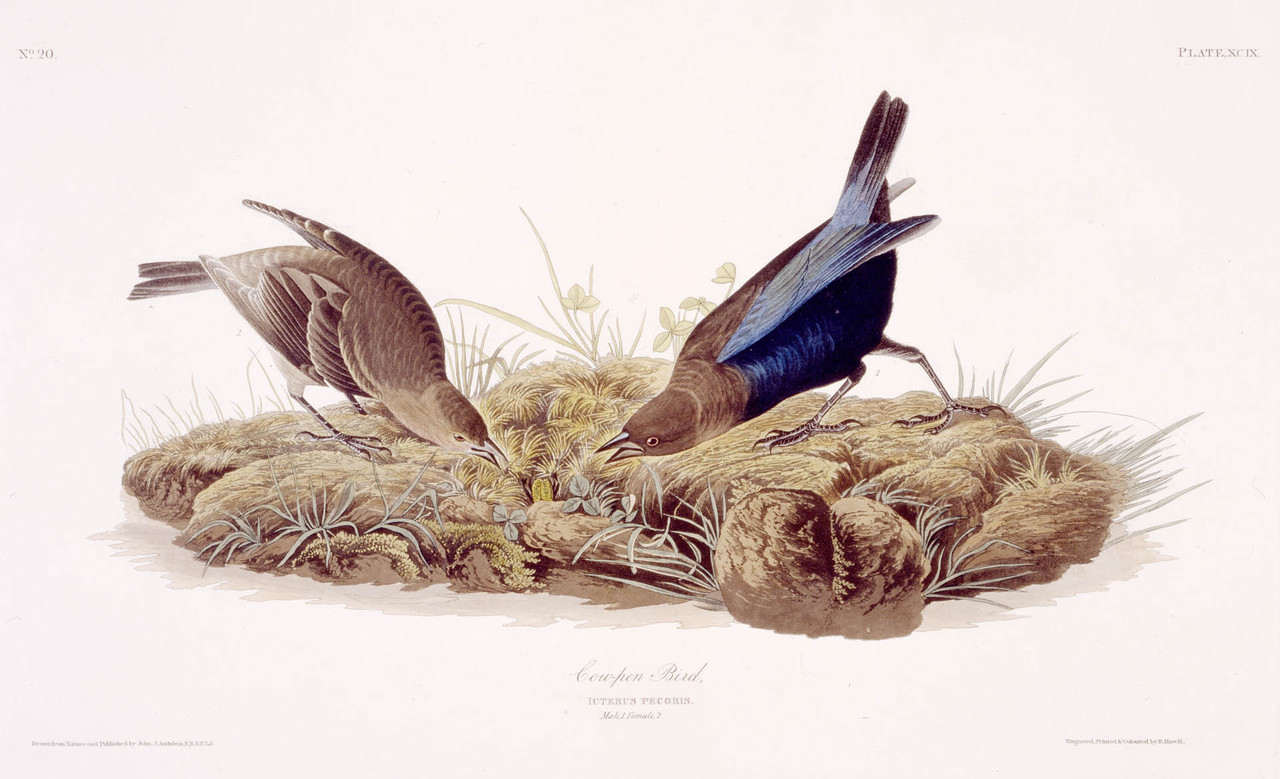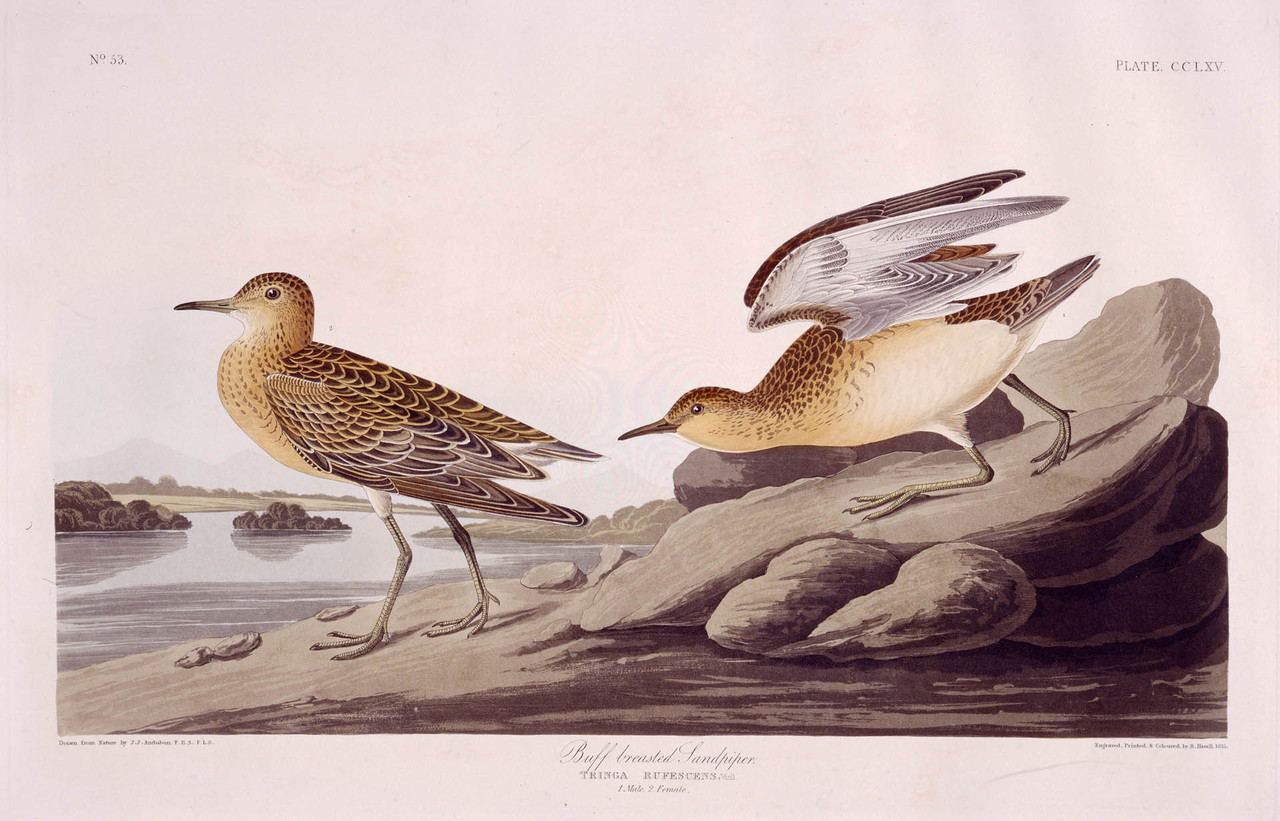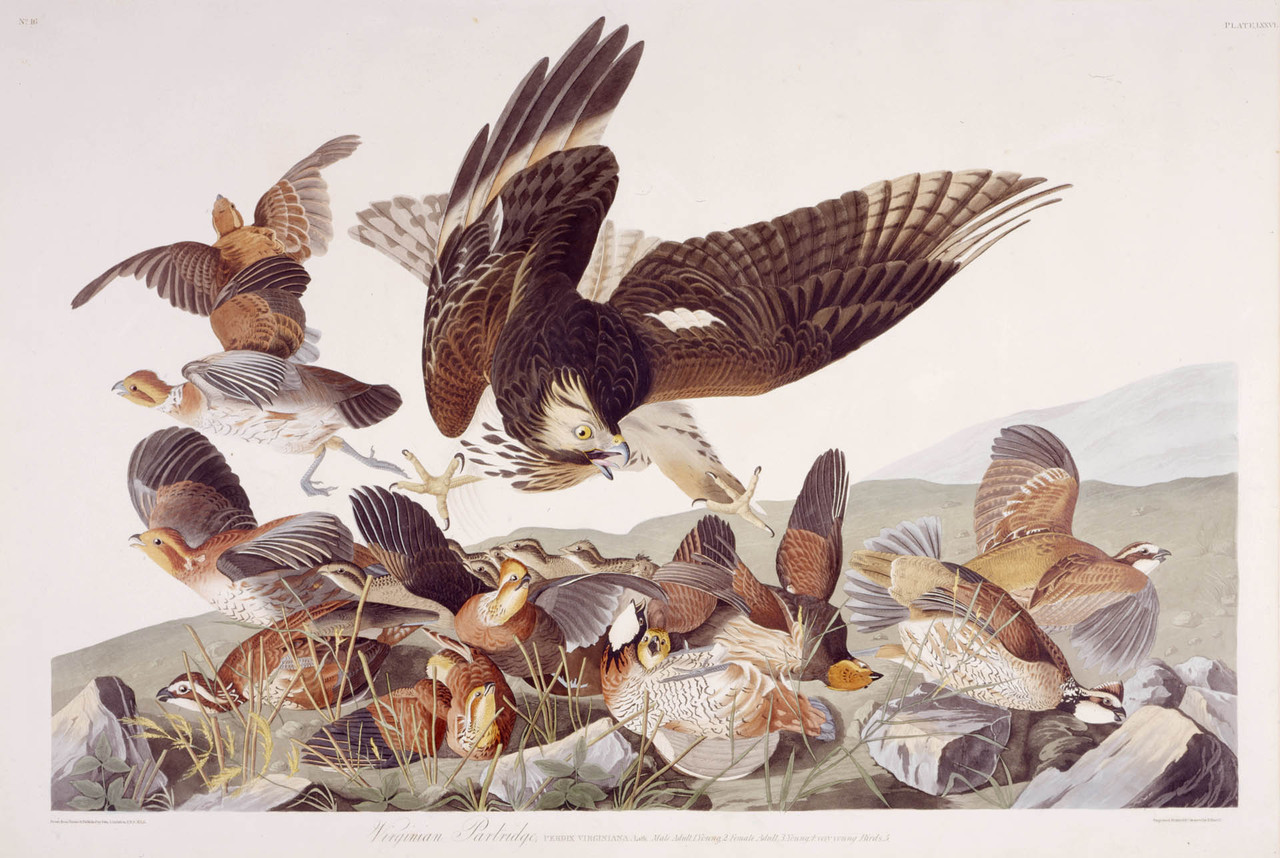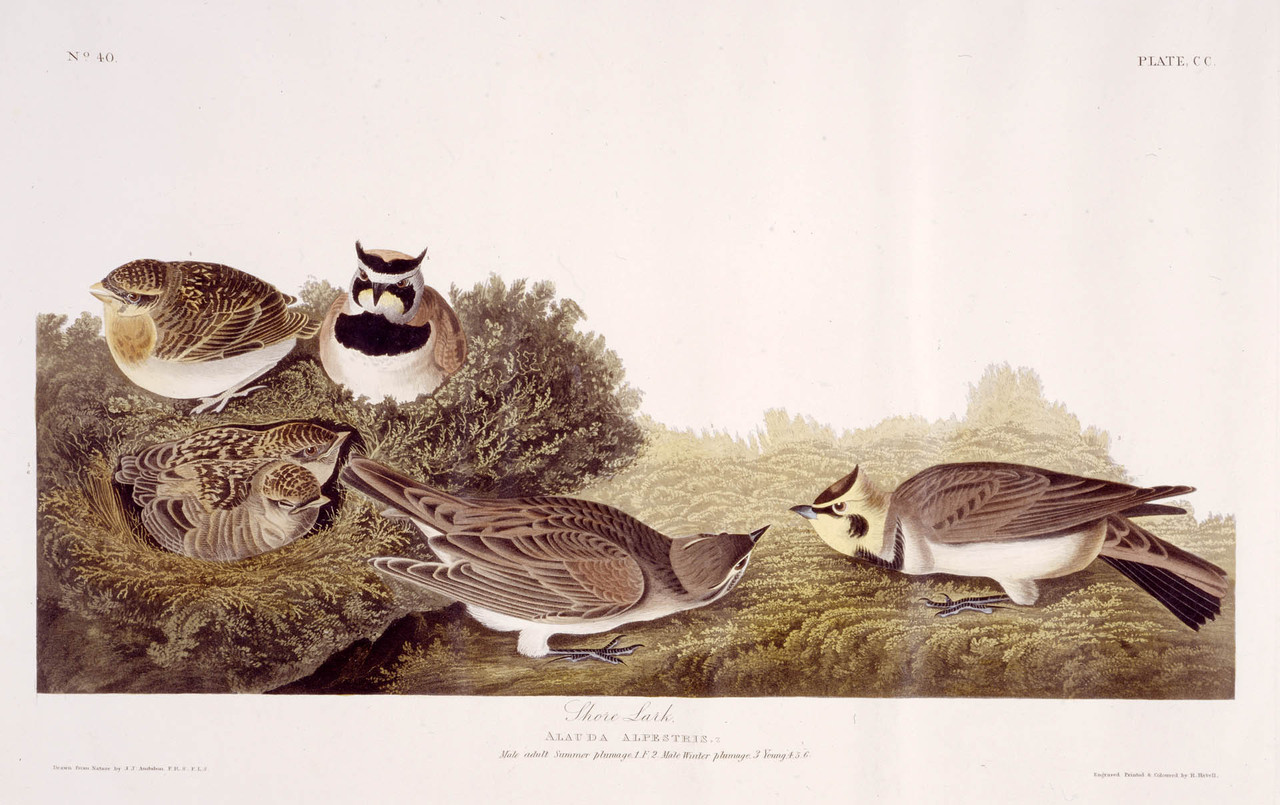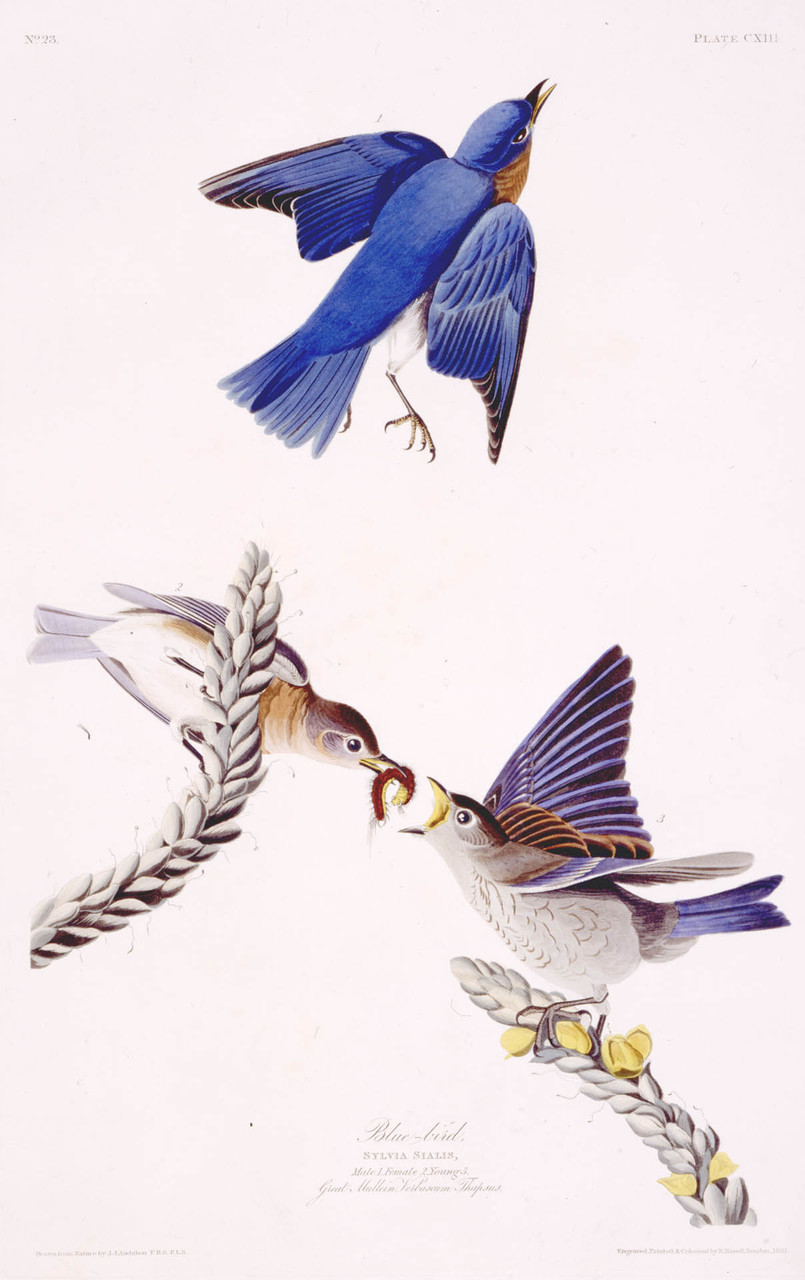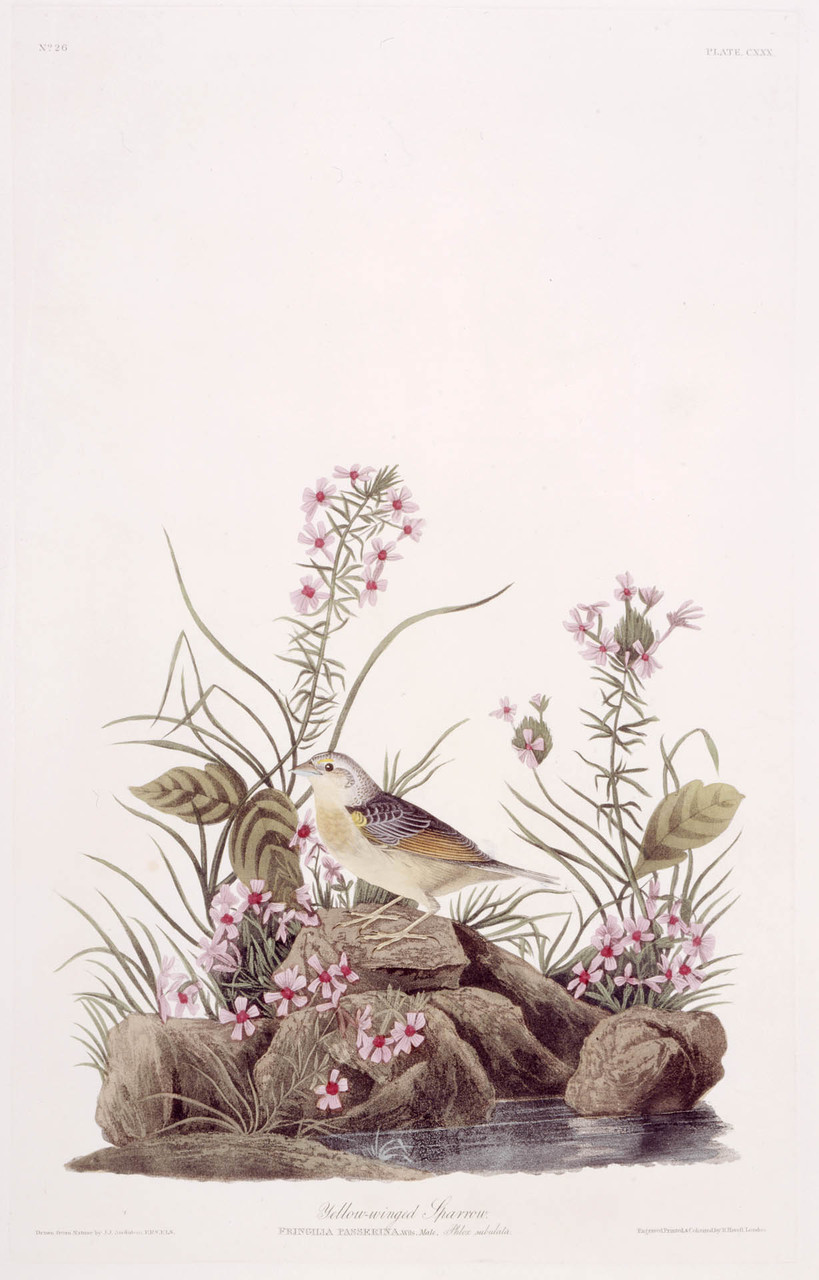Birds of the grasslands
Grassland habitats are characterized by short dry vegetation. These open habitats with scarce rainfall present environmental challenges to their inhabitants, such as lack of cover from predators and limited availability of food.
Grassland birds can also be found in farm fields, pastures, residential areas, deserts and tundra.
Some grassland species have thrived as development helped disperse forests and clear land. Other species have faced disappearing food sources.
The Esquimaux Curlew, which once crowded the skies of the Canadian Maritime provinces, succumbed to over-hunting, habitat loss and the extinction of its primary food source.
“When at a great height in the air, its gyrations are uncommonly beautiful, being slow and of wide circuit, and becoming the majesty of the king of birds.”
—John James Audubon describing the Golden Eagle in his Ornithological Biography.
Audubon was enchanted by the Golden Eagle and wrote that it took him fourteen days to capture its majesty.
One of the fastest and largest raptors in North America, it feeds on small prey, such as rabbits, ground squirrels and prairie dogs.
“In a room their flight is so noiseless that one is surprised to find them removed from one place to another without having heard the least sound.”
—John James Audubon describing the Barn Owl in his Ornithological Biography.
Barn Owls swallow their prey whole and cough up pellets of undigested material, such as fur and bones. Scientists can learn a lot about the owls’ eating habits and ecosystem by studying these pellets.
Audubon depicted the Barn Owls each with a wing outstretched in order to illustrate the species’ markings.
This small songbird migrates a remarkable distance from Canada to the furthest tip of South America.
It uses an internal compass to orient itself: iron oxide in the bird’s nasal cavity helps it to navigate.
Audubon described the bobolink as so plentiful that is was “impossible to see a meadow or a field of corn which does not contain several pairs of them.”
Over the last 50 years, the bird’s population has been on the decline in Ontario.
On his voyage to Labrador, Audubon wrote about the sweeping flight patterns of this long-legged bird.
At the time the species were plentiful and travelled in dense flocks. Over the next hundred years, the Eskimo Curlew was decimated by overhunting, habitat changes, and the extinction of its main spring food source, the Rocky Mountain locust.
There have been no confirmed sightings of the bird in 50 years.
This stocky black bird has a very surprising method of raising its young. As Audubon observed, the cowbird “makes no nest of its own, but deposits its eggs, one at a time, in the nests of other birds, leaving them to the care of a foster-parent”.
It commonly leaves its eggs in nests of woodland birds, such as the Cedar Waxing, the American Goldfinch and the Yellow Warbler.
The cowbird is likely more populous now than in they were in Audubon’s time; the clearing of forests for development has helped to expand their range.
Audubon depicted the sandpiper along the Arctic coasts, where it breeds.
Apart from the breeding season, it spends most of its time in dry grassy tundra. The sandpiper migrates from the middle of the continent to South America each year.
“The different attitudes exhibited by the [Partridges] cannot fail to give you a lively idea of the terror and confusion which prevail on such occasions.”
—John James Audubon describing the Virginia Partridge in his Ornithological Biography.
In this dramatic scene, Audubon depicted a covey of Bobwhites under attack by one of their predators, the Red-shouldered Hawk.
It would be rare to spot bobwhites out in the open like this. These short-tailed quails scurry quickly between the cover of grassland shrubs, camouflaged by their speckled plumage.
A very adaptable species, the Horned Lark inhabits a wide range of elevations. It can be found anywhere from sea-level to an altitude of 13,000 feet.
It prefers over-grazed land, and the advance of development has helped to increase its numbers.
“The song of the Blue-bird is a soft agreeable warble, often repeated during the love-season, when it seldom sings without a gentle quivering of the wings. When the period of migration arrives, its voice consists merely of a tender and plaintive note, perhaps denoting the reluctance with which it contemplates the approach of winter.”
—John James Audubon describing the Blue-bird in his Ornithological Biography.
“The nest of the Yellow-winged Sparrow is as simple as its owner is innocent and gentle. It is placed on the ground, and is formed of light dry grasses, with a scanty lining of withered fibrous roots and horse hair.”
—John James Audubon describing the Yellow-winged Sparrow in his Ornithological Biography.
[The male’s] “unmusical notes are almost continuously uttered from sunrise to sunset, and all this while the female is snugly seated on her eggs, and listening to her beloved. He often visits her, alighting within a few yards of where she is concealed, and then cautiously proceeding toward the spot on foot, through the grass.”
—John James Audubon describing the Black-throated Bunting in his Ornithological Biography.
